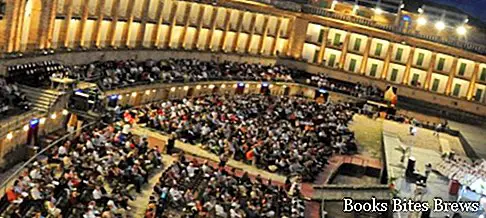What to see in Macerata, itinerary including the main monuments and places of interest, including Sferisterio, Duomo, Madonna della Misericordia, Palazzo Buonaccorsi and Loggia dei mercanti.
Tourist information
Located on the top of a hill, between the valleys of Potenza and Chienti, Macerata was founded by refugees from Helvia Ricina, destroyed in 1100, in the fourteenth century it was a bishop's city, passing later to the dominion of various lordships, including those of Mulucci , of the Da Varano of Camerino and of the Sforza, until it became possession of the Papal States, a situation which lasted until the unification of Italy.
The visit can be started in via Pantaleoni, starting from the sferisterio, a neoclassical arena capable of holding up to 7000 spectators, built on a project by Aleandri and suitable for being used for the representation of lyrical works, thanks to the acoustics of excellent level.
In Piazza Strambi there is the Duomo, dating back to the eleventh century but entirely rebuilt in the eighteenth century, with a remarkable bell tower from the fifteenth century and a beautiful dome, with a Latin cross interior where a fine fourteenth-century triptych is preserved.
In the same square overlooks the Church Madonna della Misericordia, built over a church of fifteenth-century origin and enlarged between the eighteenth and nineteenth centuries, including an interesting interior of Vanvitelli, with a single nave, where decorations abound,
Nearby, in via Don Minzoni, is the eighteenth-century Palazzo Buonaccorsi, inside which stands the Sala dell'Olimpo, named in this way because it is adorned with frescoes and paintings by the Bolognese and Neapolitan school.
By continuing to walk you will reach Piazza della Libertà, where the seventeenth-century Palazzo del Comune is located, made of terracotta.
In the courtyard there are archaeological finds from Helvia Ricina and Urbisaglia.
What see
In the same square overlook the Renaissance Loggia dei Mercanti, built in the sixteenth century on behalf of Alessandro Farnese, the Palazzo della Prefettura in terracotta, with remains of arches from the thirteenth century and a marble portal from the sixteenth century, the Church of San Paolo, with terracotta facade and interior containing works by Simone Fanelli.
The thirteenth century University Palace has inside a remarkable lecture hall from 1893, the Municipal Theater is a work by Morelli on a project by Bibbiena, the Torre Maggiore, also known as the Clock Tower, was built by Alghisi da Carpi in seventeenth century.
Along Corso Matteotti there are the Palazzo Mozzi or dei Diamanti, the Palazzo Rotelli and the Palazzo Mozzi-Consalvi, all dating back to the sixteenth century.
Recommended readings- Fossombrone (Marche): what to see
- Marche: Sunday day trips
- Fermo (Marche): what to see
- Marche: what to see among valleys, hills and ancient villages
- Osimo (Marche): what to see
In Piazza Vittorio Veneto there is the Civic Museum and the Municipal Art Gallery, both housed in the former Jesuit college, a seventeenth-century building.
In the annexed municipal library there are papers and prints of great historical importance.
In the museum there are prehistoric tools, Roman busts, musical instruments and sketches for opera performances.
In the art gallery there are paintings by Crivelli, Recanati, Spolverini, as well as a Madonna del Sassoferrato, works by Turcato, Cagli, Vedova and others.
In the same building there are also the Carriage Museum and the Museum of the Risorgimento.
In the surroundings of Macerata, about 10 km away, is the Chiaravalle di Fiastra Abbey, one of the oldest Cistercian Gothic abbeys in Italy.
The complex consists of the church, with a remarkable facade with a Romanesque portal and an interior with a frescoed ceiling, the former monastery, with chapter house and refectory, and the cloister of the fifteenth century.




